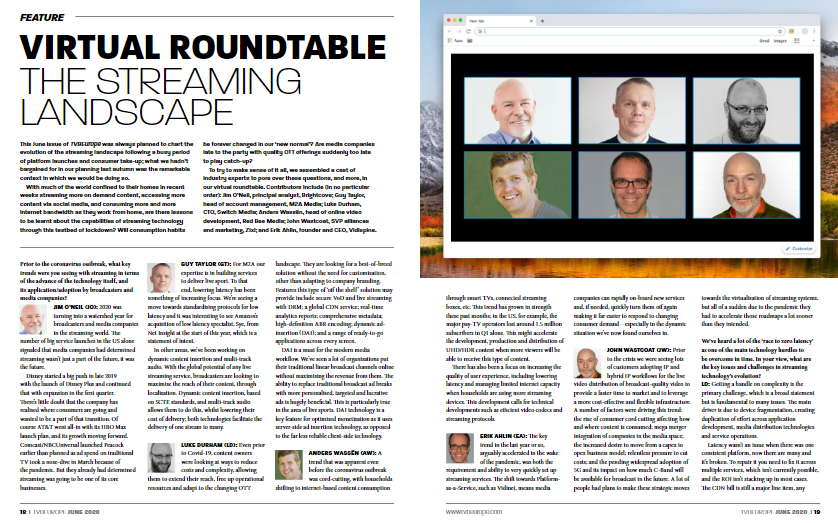
Zixi’s John Wastcoat featured along with industry experts from Brightcove, M2A Media, Switch Media, Red Bee Media, and Vidispine.
Zixi’s SVP of Partner Alliances and Marketing, John Wastcoat, is featured in the latest issue of TVBEurope in a round table article that closely examines the streaming landscape and how it’s been affected by the COVID-19 lockdown.
Below are some excerpts from the interview. Read the full article in TVB Europe here.
TVBE: Prior to the coronavirus outbreak, what key trends were you seeing with streaming in terms of the advance of the technology itself, and its application/adoption by broadcasters and media companies?
John Wastcoat: Prior to the crisis we were seeing lots of customers adopting IP and hybrid IP workflows for the live video distribution of broadcast-quality video to provide a faster time to market and to leverage a more cost-effective and flexible infrastructure. A number of factors were driving this trend: the rise of consumer cord cutting affecting how and where content is consumed; mega merger integration of companies in the media space; the increased desire to move from a capex to opex business model; relentless pressure to cut costs; and the pending widespread adoption of 5G and its impact on how much C-Band will be available for broadcast in the future. A lot of people had plans to make these strategic moves towards the virtualization of streaming systems, but all of a sudden due to the pandemic they had to accelerate those roadmaps a lot sooner than they intended.
TVBE: Are we learning anything new about the capabilities of streaming technology during this period of lockdown, good or bad?
JW: As more broadcasters are forced to quickly virtualize their workflows, we’ve learned a lot about why the future of streaming technology will be software-defined and delivered over IP backbones. Moving away from fixed hardware infrastructures to more software-defined solutions that leverage IP distribution allows for a flexibility and immediacy that is essential when it comes to remote monitoring and operations. But not every live streaming software solution is created equal, to truly maintain broadcast continuity in virtualized workflows your software-defined streaming solution needs a few key items to be successful: multi-protocol acceptance, essential software tools and core media processing functions that operate over any IP network, one centralized control plane to cost-effectively manage complex deployments at scale and a broad network of integrated partners to ensure interoperability to future proof your business.
TVBE: What specific challenges are you facing as a company during this period and what sort of questions/concerns are you getting from your media clients?
JW: During this challenging time where many clients were forced to make the switch to remote operations quickly, the biggest question we’ve been getting is “How do I maintain continuity in broadcast operations from home?” During this pandemic we’ve spent a lot of our time getting people home, helping our broadcast and media customers redefine their workflows for people operating remotely, and giving them the tools they need to provide the monitoring, management, telemetry and orchestration that allows them to work from home while still maintaining broadcast operations and delivering broadcast-quality live video.
TVBE: What do you think will be the longer term impact for media companies following the pandemic? Does it underline that a more holistic offering incorporating ‘next generation’ TV/media services are fundamentally important going forward?
JW: We are seeing that many companies believe there will be a permanent need to facilitate remote operations in the long term, and that a shift towards a virtualization of workflows from hardware to software-defined is key. We recently took a poll of media industry executives following a Remote Monitoring and Operations Webinar that Zixi hosted and the results demonstrated this shift in that 81% now believe that their organisations require permanent remote workforce capabilities, with 95% believing the move to remote workflows will drive faster Cloud adoption,
and 93% believing the move to remote workflows requires more telemetry data and orchestration. We also saw that these executives believe that remote workflows will have a significant economic impact with 97% saying the move to remote workflows will provide new revenue opportunities, and 93% stating that the move to remote workflows will provide cost saving opportunities.

